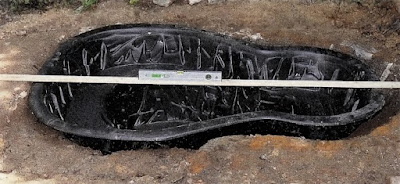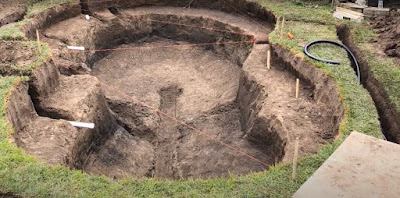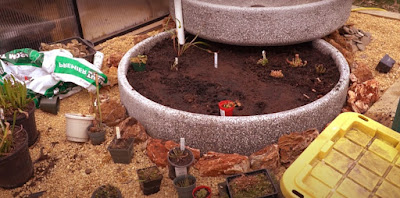How do you install a rigid pond liner | Are preformed ponds any good?
What is a rigid liner?
The term generally refers to preformed liners, which iook a bit like bath tubs. They are usually made of fibreglass, reinforced plastic or some other type of plastic or rubber compound. Fibreglass is the best, and thin, shiny, vacuum- formed plastic shapes are the worst.Preformed liners are usually suitable for small pools only, and they are available as a complete unit. There is, however, an increasing number of modular units that can be fastened together to make a bigger pool or a series of pools. There are even sections that can be joined together to make streams. Preformed units are usually blue, grey or black and are available in a range of informal shapes,although some formal shapes can be found. Preformed pools generally have marginal shelves built into them. Remember: they look larger in the store than they do in the ground.
How can l dig out the different levels of a rigid preformed liner?
Before you begin marking out and digging, buy the liner so that you can work with the correct dimensions.If the pond is a regular shape simply invert it on the ground and mark around the edges with sand, string or your garden hose. If it is irregular in shape you cannot do this, instead, you must transfer the shape to the ground while the liner is the right way up, and you will probably need help. Put the liner on the surface of the soil in the exact position that you want the pond to be. If you are working alone, use bricks or building blocks to hold it upright. If you have some canes, insert these at regular intervals of 60-90cm (2-3ft) around the pond, using a spirit level to make sure that the canes are vertical. When the canes are in position, lay string or a hose around them to mark the outline of the liner on the ground (illustrated below). Alternatively, using a spirit level or plumb line, drop a series of vertical lines from the edge of the rigid liner to the ground and mark the points on the ground. Go around the liner, dropping verticals at regular intervals, so the outline of the liner is transferred to the ground.
Move the liner out of the way and begin to excavate the hole, working 5-8cm (2-3in) outside the line you have marked. Measure the depth of the first ledge and excavate to about this depth, creating a shallow, level pond. Lightly rake the surface of the soil and place the liner on this in its correct position. Press down the liner to transfer the outline of the deeper zone of the unit to the ground, remove the liner and dig out the next level, again making the hole 5-8cm (2-3in) deeper and wider than the unit.











Comments
Post a Comment